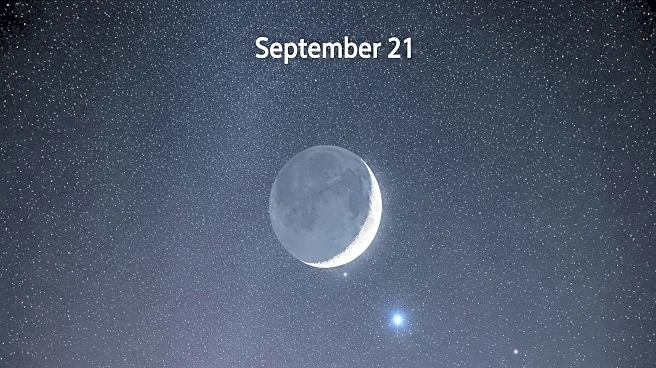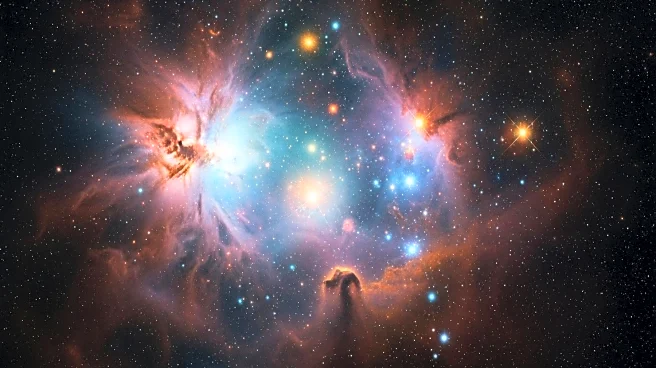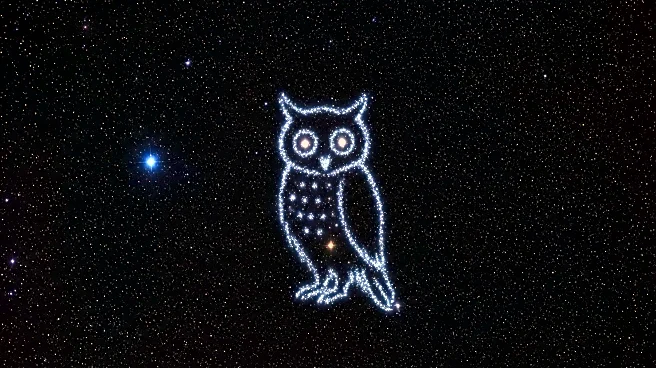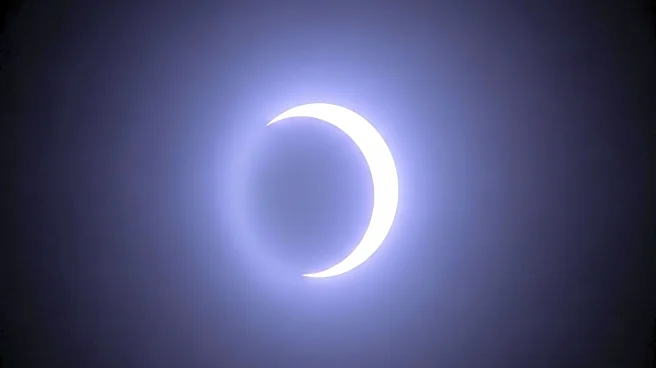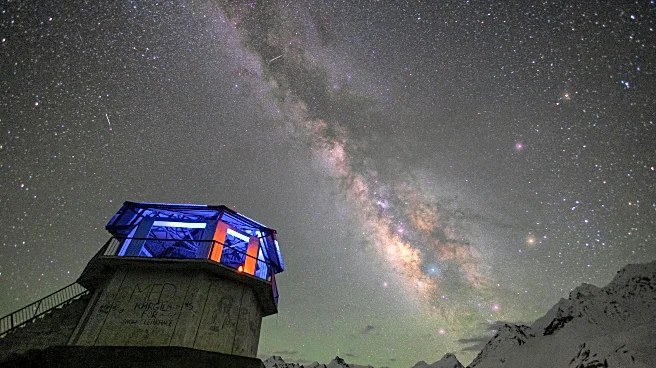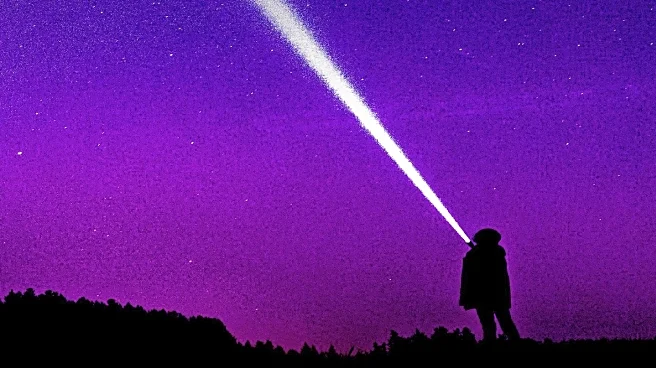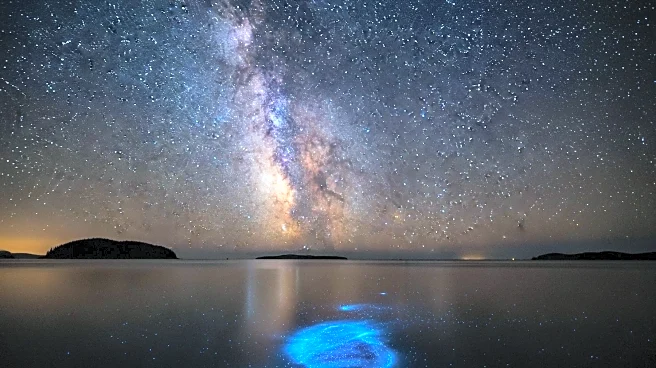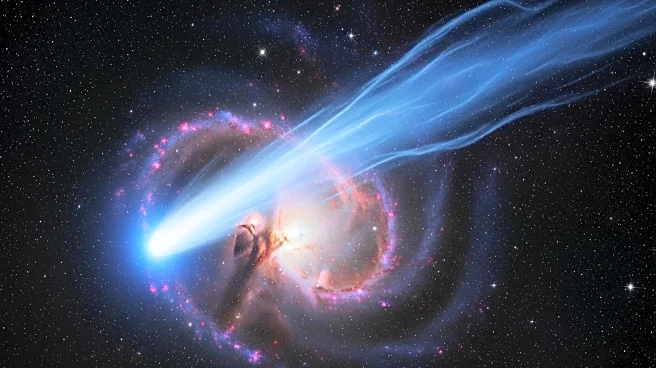What's Happening?
Amateur astronomers are gearing up for an optimal viewing experience of the Milky Way as the new moon phase on September 21 promises darker skies. This period marks a transition from the hazy summer skies to clearer autumn nights, providing a prime opportunity for stargazing. The Milky Way will be visible as a glowing arch stretching across the sky from northeast to southwest. Observers are encouraged to use binoculars to explore star clusters and gaps like the 'Great Rift' in Cygnus. However, light pollution remains a significant barrier for city dwellers, making it difficult to see the Milky Way in urban areas. The Bortle scale, developed by John Bortle, helps gauge sky darkness, with rural areas offering better visibility compared to metropolitan regions.
Why It's Important?
The event highlights the ongoing issue of light pollution, which has significantly impacted the ability to view celestial phenomena like the Milky Way. As urban areas continue to expand, the natural night sky becomes increasingly obscured, affecting not only amateur astronomers but also the general public's connection to the cosmos. This period of optimal viewing serves as a reminder of the importance of preserving dark skies and addressing light pollution. It also underscores the need for awareness and potential policy measures to mitigate the effects of artificial lighting on night sky visibility.
What's Next?
Astronomers and enthusiasts may advocate for more stringent regulations on outdoor lighting to preserve dark skies. Public awareness campaigns could be launched to educate communities about the impact of light pollution and the benefits of dark sky preservation. Additionally, technological advancements in lighting design may offer solutions to reduce light pollution while maintaining safety and functionality in urban environments.
Beyond the Headlines
The event also touches on cultural and educational aspects, as viewing the Milky Way can inspire interest in astronomy and science among younger generations. It provides an opportunity for educational institutions to engage students in astronomy-related activities and discussions about environmental conservation. The experience of viewing the Milky Way can foster a sense of wonder and appreciation for the universe, encouraging broader societal interest in space exploration and scientific inquiry.

